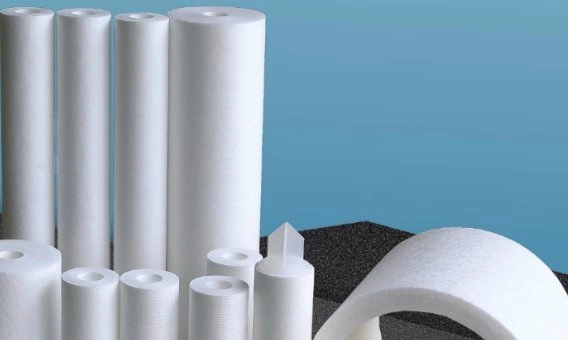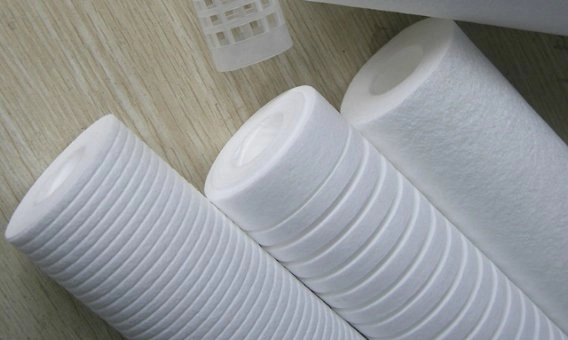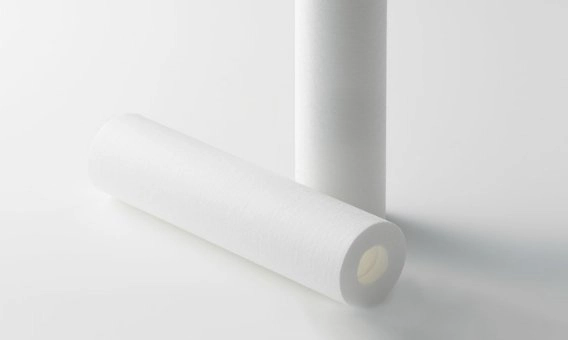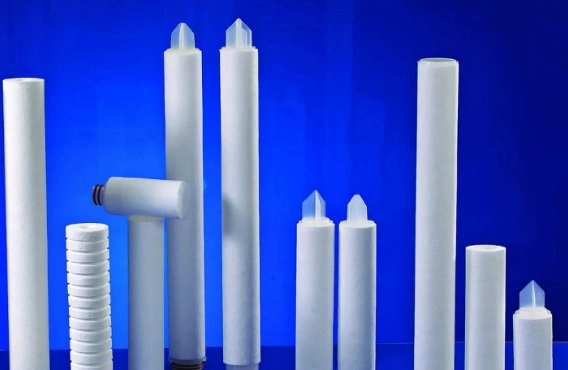
Your Premier Melt Blown Filter Cartridge Manufacturer
Filson melt blown filter cartridge or melt blown filter, melt blown polypropylene filter, PP melt blown filter cartridge, is a kind of depth filter cartridge which is good at removing particles from water and collecting the dirt throughout the whole depth of the filter material.
Filson melt blown filter cartridges are made of 100% high purity polypropylene(PP) microfibers and core. Filson melt blown polypropylene material offers excellent chemical compatibility and high temperature resistant to 80°C. The melt blown process adopts thermal bonding, eliminating the need for binders or additives, which may be contaminants themselves.
Filson melt blown filter cartridges, with our water filter housing are widely used in domestic and industrial water filter applications including pure water filtration, chemical process industry, food&beverages, surface finishing, metal working, magnetic media, photographic, petrochemicals and potable water filtration…
- More Details
- Technical Dat
- Features
- Applications
Filson Melt Blown Filter Cartridge
Compared to other types of water filter cartridges, Filson melt blown filter cartridge allows for using very fine microfibers to greatly improve the filtration efficiency.
In addition, Filson melt blown filters can offer an enhanced barrier property and good wicking property with an optimal graded density and much larger pore volume.
Filson melt blown filter cartridges are ideally replacements for many melt blown filter brands, such as Domnick Hunter melt blown filter cartridges, Pall melt blown filters, Eaton melt blown polypropylene filters, Pentek PP melt blown filter cartridges, Parker Hannifin melt blown filter cartridges and other brand melt blown filters replacement.
With Filson state-of-the-art equipment and meltblown technology, we can design and supply a full line of reliable melt blown filters to help you remain competitive.
Whether custom or standard, Filson melt blown filter cartridges delivers a highly cost effective filtration solution to meet your every need.
Filson Meltblown Technology/Meltblown Process
Filson melt blown filter cartridges are made of different fineness or density polymer fibers layers.
These different density layers can be achieved by changing polymer fiber size, rotation speed, air flow and so on.
This process can be automated with PLC control, ensuring constant and high-quality melt blown filters cartridges.
Concrete operations process as follows:
- Press the polymer fibers through an extruder and heated to their melting point.
- Blow out the molten polymer fibers through a nozzle with hot air.
- The fibers are collected on a rotating collection tube and form a porous matrix due to the high turbulent airflow.
- Fiber layers are built up to a predetermined thickness and thus form an effective “depth” filter.
Most of Filson melt blown filter cartridges are manufactured with polypropylene(PP).
Polypropylene(PP) is the most widely used polymer for meltblown technology.
Besides, a variety of different materials are used, including polyamide, polyester, and polyethylene.
Spun Bond Filter Cartridges VS Melt Blown Filter Cartridges
- Compared to spun filter cartridges, Filson melt blown filter cartridges requires a polymer with a relatively low melt viscosity.
- Because of using compressed hot air, Filson melt blown filter cartridges would consume more energy than the spun filter cartridges.
- Generally, meltblown nonwovens are more expensive than spun nonwovens, such as, the initial investment in spunbond technology is three to four times higher than that in meltblown technology.
String Wound Filter Cartridges VS Melt Blown Filter Cartridges
- Filson wound filter cartridges have a significantly larger effective surface area than melt blown filter cartridges, due to the overlapping characteristics of the wound wires.
- A core is required for string wound filter cartridge structural firmness. Filson melt blown filter cartridges do not require a core because the fiber is very firm itself. Certainly, a core can be added for additional structural strength or higher temperature resistance.
- Filson string wound water filter cartridges are exceptionally useful for surface water filtration, such as river water, wastewater and process Filson melt blown filter cartridges are especially effective in spring water and city water, RO filtration and pharmaceutical processes.
Melt Blown Filter Cartridges: The Complete Guide
Impurities have been a significant source of malfunctions in many systems such as those in use in our houses.
Well, technology has also been advancing day and night to provide us with the best solutions to filter the impurities.
Today, I want to introduce you to yet another efficient and reliable filtration accessory – melt blown filter cartridge.
So, this guide focuses on every detail you need to know about melt blown filter cartridge.
From the basic definition, design, material, technology to technical specifications, among other aspects – by the end of it all, you will be a melt blown filter cartridge expect.
Let’s dive right in.
- What is a Melt Blown Filter Cartridge?
- Why You Need Melt Blown Filter Cartridge
- Best Material for Melt Blown Filter
- What is Melt Blown Technology
- Melt Blown Filter Manufacturing Process
- How polypropylene (PP) Melt Blown Filter Cartridge Work
- Technical Specifications Considerations when Buying Melt Blown Filters
- Comparing Melt Blown Filter Cartridge with Other Filtration Technologies
- How to Replace Melt Blown Filter Cartridge
- Main Applications of Melt Blown Filters
- Conclusion
What is a Melt Blown Filter Cartridge?
A melt blown filter cartridge is a type of a filter cartridge that has a “polypropylene melt blown depth filter“.
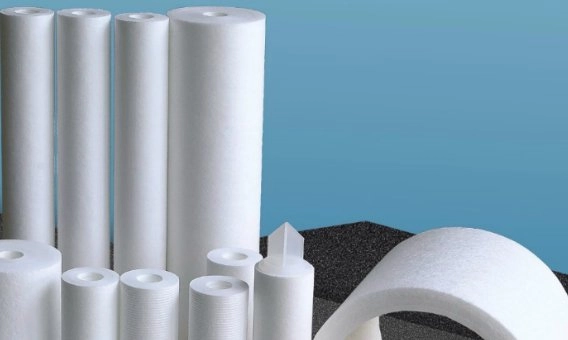
Melt blown filter cartridge
It provides very high performance in filtering impurities from a wide range of fluids in different applications.
The melt blown filter cartridge comes in many designs that you will find useful for various applications.
When you come across the term “melt-blown“, it means that your filter cartridge goes through “melt blown technology“.
The technology uses computers to control the whole process where fibers collect in a “grade pore structure about a molded core”.
You will realize that it is one of the best technologies that you will come across in all the filters.
It is the filter that you will come across widely in use in industrial and domestic water treatment projects.
You can quickly identify the melt blown filter cartridge using the following names:
- Polypropylene melt blown filter cartridge
- Polypropylene spun water filter
- Polypropylene filter
Depending on the manufacturer, there are two main types of melt blown filter cartridges.
These include:
- Melt blown sediment filters
- Melt blown groove sediment filters
These filters are available in different dimensions, and you are at liberty of making a custom order for your cartridge.
The significant difference among the melt blown filter cartridges is the groove on the material in use.
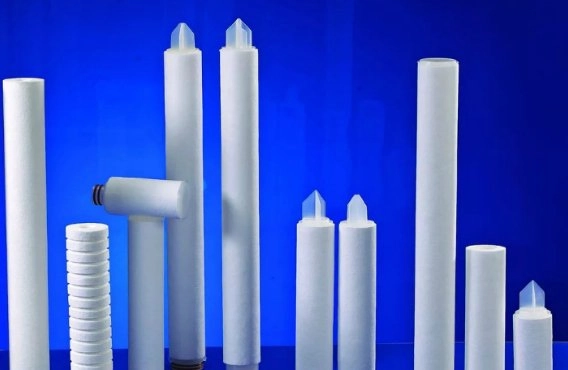
Figure 2Different sizes of melt blown filter cartridge
Melt blown grooved sediment filter has a slot on the polypropylene making it ideal for removing large course sediments.
The sediments that you can easily remove using this type of filter include sand, dirt, rust particles and silt.
The grove on the material increases the surface area by two resulting in a cleaner drop in pressure.
It performs better in cleaning downstream contaminates with the higher capacity to hold dirt.
Typical applications include beverages, portable water, metal finishing, fine chemicals and plating solutions among others.
Melt blown sediment filters are common in applications such as swimming pools, filtration of home water due to high efficiency.
It does not have grooves on the polypropylene but still offer excellent filtration and better stability at different temperature ranges.
The construction has a unique density that maximizes efficiency and minimizes drops in pressure.
Why You Need Melt Blown Filter Cartridge
You will filter fluids with the use of different forms of cartridges among them being the melt blown filter cartridge.
It is the cartridge of choice especially when you look at the features that it has.
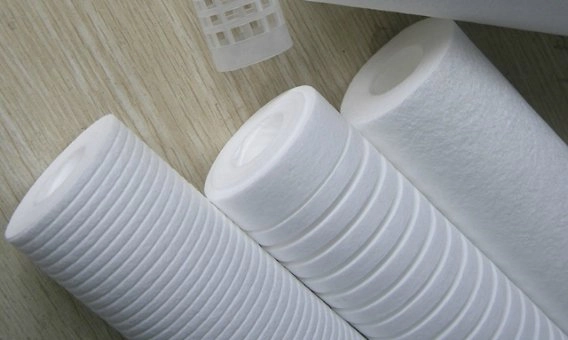
Designs of melt blown filter cartridge
Among the features that you will find in the melt blown filter cartridge include:
- It is very economical to use, and it has a very long-life circle. It means that you will not need to use a lot of money in maintenance of the filters. Apart from that, the cartridges are durable and do not require replacements from time to time.
- The fiber manufacturers use in making the filter is purely 100% polypropylene making it very efficient. This material is among the best fibers one can find in a filtration machine thus ensuring perfection.
- The polypropylene material passes through the FDA grading system ensuring you of the best quality material in the industry. It is also free of additives, binders or lubricants that you may find in other materials. The material has even gone through the process of NSF certification and approval.
- It does not release any fibers making it suitable for use in temperatures that are relatively higher than usual.
- You also have the privilege of finding the filters in different selections and micron ratings ranging from 1 to 100 millimicrons.
- The melt blown filters have special materials that allow for very high flow rates. It will allow you to filter a higher capacity of fluids in a concise time.
- The design also allows the device to have very low drops in pressure making it more efficient in its functions.
- It does not have an impact on the odor, taste and colour to the product that you will filter
- It also has a very high capacity of holding dirt thus a device of choice when handling large quantities. It is also very efficient in cleaning fluids that have a lot of impurities such as dirt.
- The pore structure does not allow debris to pass through resulting in a pure fluid at the end of the process.
- It is also compatible with a wide variety of chemicals. It means that you can use it in different industrial applications to clean your chemicals.
- The process of cleaning has a particular form of control making it one of the most consistent products. You are not likely to experience performance on different levels when using this type of filter. It has a great form of control making every step consistent and producing the best results.
- It has a proprietary inter-zone bonding process that provides a filtration structure that is rigid.
- It does not compress even in a situation where the differential pressure is on the increase.
- It is easier and safer to dispose of the cartridge through incineration, compactions or shredding.
Best Material for Melt Blown Filter
Melt blown filter cartridges are available in different materials, but the best among them is the polypropylene (PP) material.
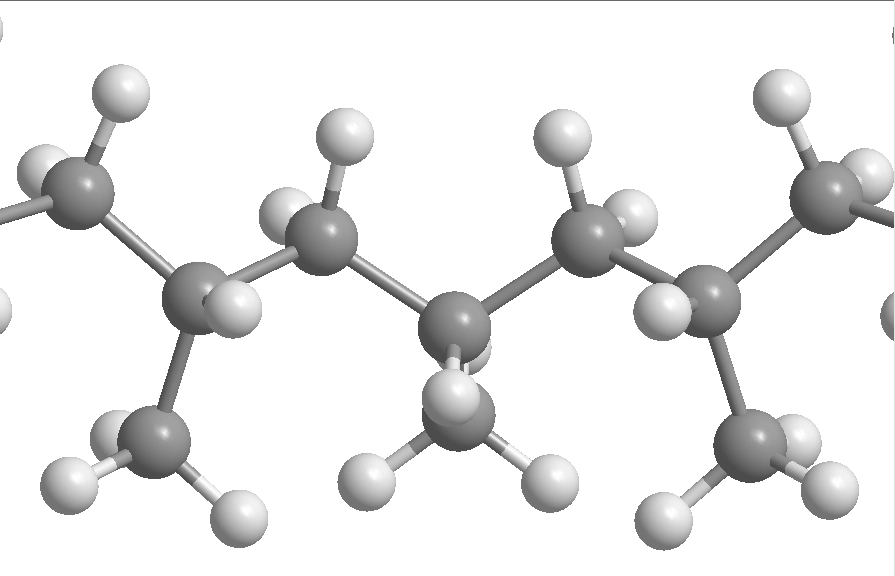
Polypropylene
It is one of the thermoplastic polymers that you will find in most of the filters we use frequently.
This is a product of chain growth polymerization originating from monomer propylene.
It is a member of the group polyolefins thus making it non-polar and partially crystalline.
It has properties similar to that of polythene, but it has higher resistance to heat and is slightly hard.
In most cases, it is white, mechanically rugged and is highly resistant to chemicals.
Chemical and Physical Properties
The aspects of polypropylene are similar to that of polyethylene especially when looking at electrical properties and solution behavior.
The properties of the polypropylene will depend on the molecular weight and the distribution of the molecular weight.
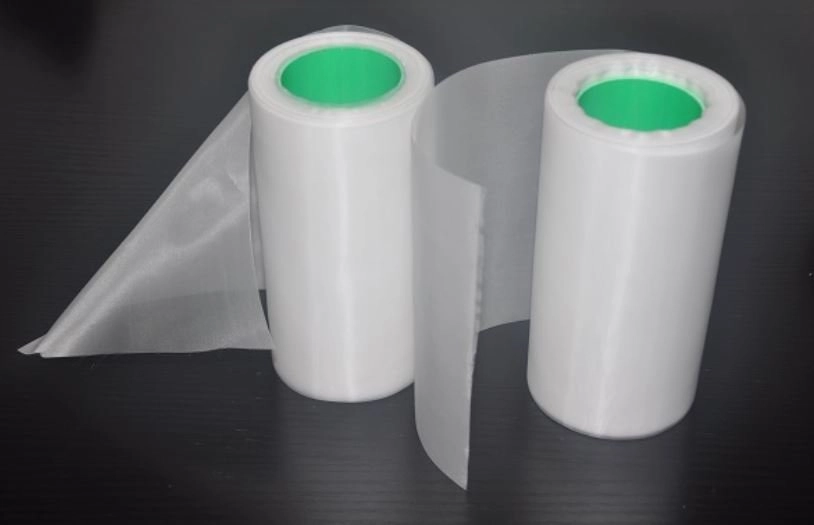
PP Material
Apart from that it also depends on its crystallinity, proportion and type of commoner and isotacticity.
Thermal properties of the material vary and will occur in a wide range.
The melting point will happen in a wide range usually a determination of “different scanning calorimetry chart”.
A perfect polypropylene has a melting point ranging between 160 degrees centigrade to 171 degrees Celsius.
It has a very wide thermal expansivity but is not as large as that of the polyethylene.
The chemical properties of polypropylene include:
- Resistance to fats and almost every organic solvent at room temperature except for powerful oxidants.
- It can dissolve in non-polar solvents such as tetralin, xylene, and decalin in elevated temperatures.
- It is also chemically less resistant than PE because of the presence of the tertiary carbon atom.
The crystalline structure divides it into different types of polypropylene which include:
- Isotactic Polypropylene that exists in various modifications differing by molecular arrangements of polymer chains. The adjustments fall under the alpha, beta and omega modifications as well as smectic forms.
- Syndiotactic polypropylene is a late discovery of the polypropylene. You can only prepare this type of polypropylene by using a metallocene catalyst. It has a low melting point depending on the tacticity degree.
- Atactic polypropylene which amorphous and the crystal structure is not defined. In simple terms, the polypropylene has no crystals making it soluble at moderate temperatures.
What is Melt Blown Technology
Melt blown technology is among the techniques you can use in making the filter cartridge.
In many cases, you will come across the name melt blowing technology which means the same thing.
It is the primary process by which manufacturers use to make the polypropylene melt blown filter cartridge.
It is a conventional method of fabrication of nanofibers and microfibers where polymer melts extrude through small nozzles.
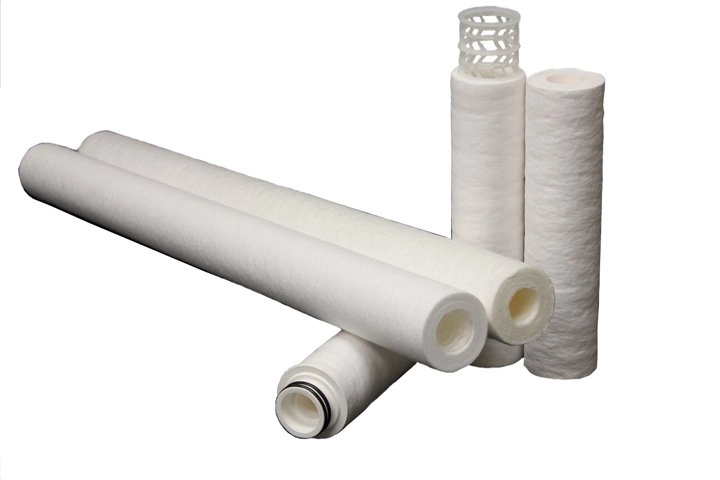
Melt blown filter cartridge
The extrusion of the polymers is because of gas that blows at very high speed.
The fibers that deposit randomly form a “nonwoven sheet product” that you can apply in:
i. Filtration: -Porous melt blown fabrics are common and integral components infiltration of liquid as well as gaseous materials. The main applications are in the treatment of water, gas masks. Air conditioning among others.
ii. Sorbents: – Non-woven materials can retain lots of liquids that are several times heavier than their weights. The perfect example is the polypropylene which is capable of recollecting oil contaminants.
iii. Apparels: – They are the materials of choice in apparels even in harsh weather conditions mainly because of:
- The thermal insulation properties
- The ability to resist fluids
- breathability
iv. Hygiene products: – The efficiency of the high sorption melt-blown nonwovens is common in sanitary napkins, diapers, and feminine hygiene products.
v. Systems of delivering drugs: – it is also responsible for the dispensation of fibers that control the delivery of drugs. It has a higher throughput rate, solvent-free process, and a more full surface area making it a promising technology.
The materials that you will produce through melt blown technology is similar to other nonwoven products.
Most manufacturers prefer to use this technology because:
- It is a straightforward process.
- It is highly specific, especially in productivity.
- It is a process that does not involve the use of solvents.
Melt Blown Filter Manufacturing Process
The process of manufacturing melt blown filter cartridges is very simple depending on the kind of machines available.
Most manufacturers have the best devices which they use in manufacturing the melt blown filter cartridges.
Manufacturers use the process of melt blowing in the manufacture of the rounds.
The first step is the collection of all the raw materials you will need for the process.
Among the elements are the polypropylene resins and rollers among others.
In many cases, the rollers position within a rolling machine which rotates it at a considerable speed.
The rollers will, in turn, roll the polypropylene material around it as resins blow onto it.
The polypropylene will stick together as it rolls to a considerable diameter.
You will have to inspect the progress of the work as it is going to ensure that the process is going on well.
After that, the complete roll passes through cutting machines that will cut it into the length that you need.
You will then take every piece and weld the end cap on every side of the melt blown to complete the whole process.
Make sure you are putting on protective gear through the entire process of manufacturing the cartridges.
How polypropylene (PP) Melt Blown Filter Cartridge Work
Polypropylene melt blown filter cartridges are best suited for the process of filtration due to the properties that it has.
The features of these filters have special designs that enable the cartridge to perform better in dispensing clean fluids.
Continue reading and find out more about the process of filtration using the melt blown filter cartridge.
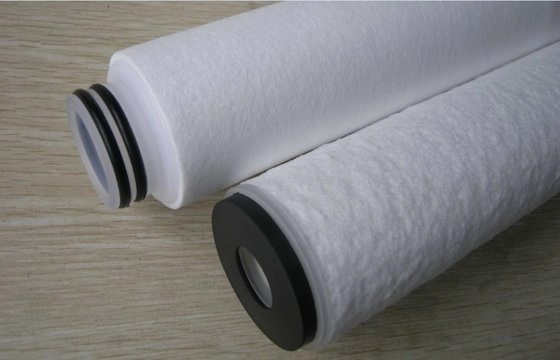
Type of melt blown filter cartridge
There are quite a number of applications where the melt blown filter cartridge works.
These applications, however, follow the same process involved in filtering the fluids.
In short, no matter the type or design of the cartridge, the process remains the same.
The fact that the polypropylene material is compact and in one piece making it resistant to media shedding and unloading.
The fixed pores structure and microscopic fibers provide integrity, efficiency and maximum retention of particles from the stream process.
They also have radial fibers responsible for distribution of gradient gradually loosening from inside towards the periphery.
The coarseness on the periphery provides enough absorption of dirt thus reducing the resistance of the filter.
The process also ensures that the material is rigid enough to take care of the process of filtration.
The layer on the inside has enough fine fibers which help in clogging the smaller particles and improves the precision of the filter.
The polypropylene resin makes the melt blown filter cartridge filter free of antistatic agents, surfactants, adhesives, and binders
Technical Specifications Considerations when Buying Melt Blown Filters
Melt blown filters are available in a number of dimensions that you can choose from when making an order.
However, you are to look at specific things that will match the kind of filtering device you have.
The specifications you will look at will determine the durability, efficiency and the general function of the invention.
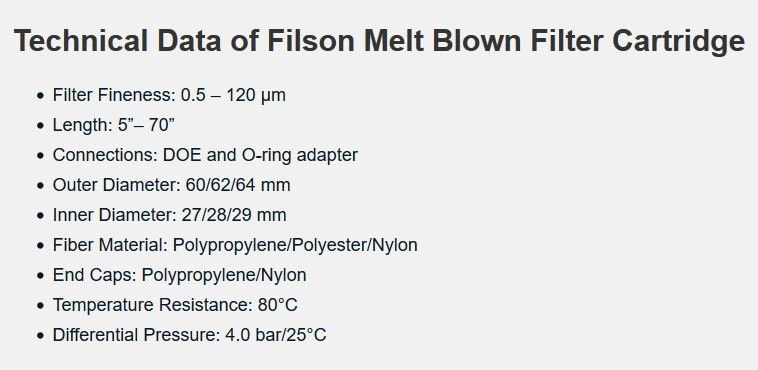
Technical data of melt blown filter cartridge
Type of material
Different manufacturers use different types of materials in making the melt blown filter cartridge.
The most common material that many manufacturers prefer to use is the polypropylene.
It is one of the most efficient material one can comfortably use in a melt blown filter cartridge hence the name.
When shopping for a melt blown filter cartridge be sure to look for a filter cartridge made of polypropylene.
This material will give you the best value for your money as it is also durable.
Filter fineness
The fineness of the filter will depend on the application with which you are going to use the cartridge.
In reality, when you are shopping for a melt blown filter cartridge, look at the filter fineness.
Relate it to the kind of job you are going to use it for before you purchase it.
You will use very fine filters to remove very small and fine sediments in different solutions.
It will also make sure that you get the purest of liquids after filtration.
Dimensions
Melt blown filter cartridges are available in different dimensions, especially when looking at the diameter, inner diameter and length.
The length, inner diameter and diameter are measured in inches, and they are available in different dimensions.
Look at the size of your filter then ask for the melt blown filter cartridge that will fit well to your screen.
You are likely to find cartridges with dimensions as follows:
| Melt Blown | Media | Micron | Cartridge Diameter | Cartridge Length | Element Grade | End Cap | Gasket |
| B | E | 1 | S | 2 | X | 2 | B |
| B | E= Polypropylene | 1 3 5 10 20 25 30 50 75 100 | S=2.5” Standard M = 4.5” C= Custom | 9.75” 10” 19.5’ 20” | S= standard X= high efficiency A= Absolute | No caps Fin Spring Flat Gasket | Buna Vitona Teflon Silicon EPDM Neoprene |
Design
Manufacturers make different models of melt blown filter cartridges depending on the intended function.
They are, however, ubiquitous designs that you can choose from that are easily replaceable.
You are at liberty of making a call and order for customized design of a melt blown filter cartridge.
Dirt loading capacity
Melt blown filter cartridges have a unique design that enables it to hold a lot of dirt as it filters.
The polypropylene material is the most suitable material for filtering and carrying dirt away from the filtrate.
You can always remove the cartridge, clean it and get rid of the dirt before putting it back to work.
The size of the melt blown filter cartridge will determine the capacity it has to hold dirt.
The bigger the cartridge, the higher the capacity to hold dirt.
Working pressure and temperature
The pressure and temperature of a melt blown filter cartridge vary accordingly.
Most of the melt blown filter cartridges have a high tolerance for increased pressure and temperature.
You will have to look at the specifications on the melt blown filter cartridge before purchasing.
End caps
Melt blown filter cartridges are available in different designs including the design of the end cap.
Look at the type of connection on your filter and then go for the end cap that will fit in well.
The most common types of end caps available in the market include:
- Polypro-226
- Polypro Core Extender
- Open End Stainless Steel -222
- Flat Open-End Gasket
- Custom End Cap
- Closed-End Stainless Steel -222
- Stainless Steel Core Extender
- Flat/Closed
- Spring
- Fin
- Flat/Open
- Plastisol Molded
Connection type
You are most likely to find melt blown filter cartridges of different dimensions including the connection type.
A melt blown filter cartridge is available in different connection types usually denoted by a number.
For example, you can find a cartridge product code as FCE107B1N with varying types of connection.
The most common connection types of the FCE107B1N being 3, 4, 6 and 7.
Compliance with set quality standards
Make sure that the material in use for making the melt blown filter cartridge has gone through approval and certification.
There are various organizations that are available to help in certifying and approving the materials in use.
They are the bodies that have the mandate to protect you as the buyer from unscrupulous manufacturers.
The main bodies that are responsible for certifying the materials and quality of the melt blown filter cartridge are:
Food and drug administration (FDA)
It is the main body responsible for promoting and protecting public health through supervision and control.
It is the body that will inspect, supervise and control the manufacture of the melt blown filter cartridge.
It is because you will use it in matters that concern the health of a human being.
NSF International
This the organization that develops and certifies the standards that manufacturers will use in making the cartridge.
It is from the NSF that manufacturers will draw the specific measures before deciding to start the process of manufacturing.
This organization will ensure the product is of the right standard depending on the public health and safety standards.
Comparing Melt Blown Filter Cartridge with Other Filtration Technologies
The efficiency of the melt blown filter cartridges attracts rivalry from other forms of filter cartridges.
Other cartridges can work in place of the melt blown filter cartridge.
Continue reading and find out why the melt blown filter cartridge is among the most sought after.
Melt Blown Filter Cartridge vs. String Wound Filter Cartridge
These are the two leading technologies that you can find in use in filtering.
Melt blown filter cartridges are products of spraying polypropylene onto drums as they build a set of thickness and layers.
On the other hand, string wound filters are products of different styles of wounding string wound to alter filtration rating.
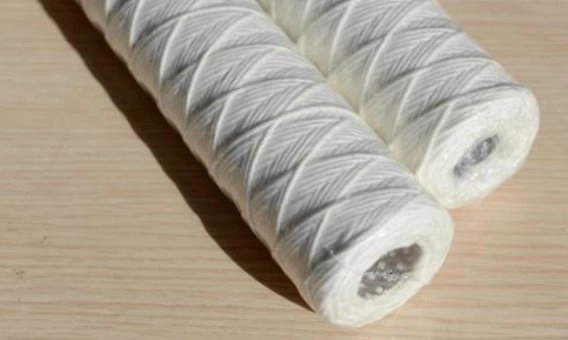
String wound filter cartridge
String wound filters are still original and have been in use for the longest time ever.
On the other hand, melt blown technology is new and seems to rival the efficiency of the string wound filter.
It is also more accurate and has a better micron rating and inner depth making it much better.
Given that the prices are more or less the same, it is better to purchase the melt blown filter cartridge.
You should not clean the cartridges because it does nothing to save the situation.
They may look clean on the outside, but the impurity load is inside.
Pleated Filter Cartridge vs. Melt Blown Filter Cartridge
Pleated filter cartridges perform better than the melt blown filter cartridge when it comes to the home water filtration system.
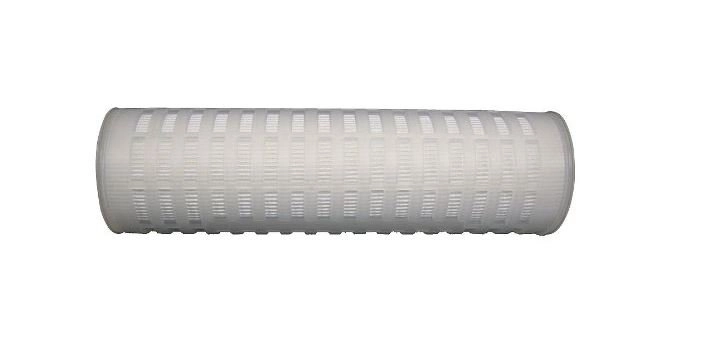
Pleated filter cartridge
You should purchase the pleated filter cartridge because it has pleats that increase the surface area for filtration.
It comprises 100 % fibre which you can quickly clean unlike that of the melt blown filter cartridge.
Spun Bond Filter Cartridge vs. Melt Blown Filter Cartridge
In this case, we have two cartridges that have the same material which is 100 % polypropylene.
They have different dirt holding capacities making the spun bond filter cartridge better than the melt blown filter cartridge.
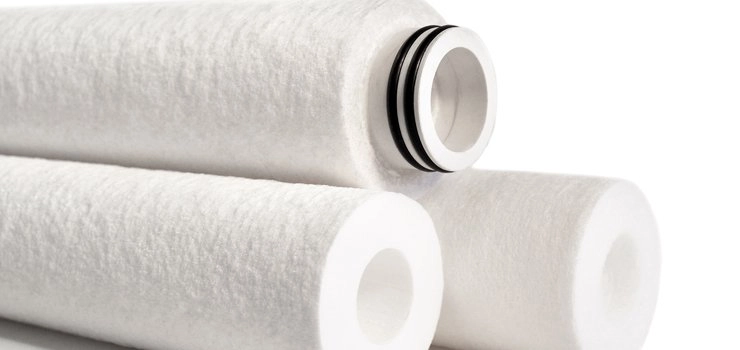
Spun bonded filter cartridge
When shopping for efficiency and economy, please go for the spun bond filter cartridge.
How to Replace Melt Blown Filter Cartridge
As time goes by, you will need to find a replacement for your melt blown filter cartridge.
They often accumulate a lot of dirt that they filter so you should be able to remove it and replace it.
You should also know that the cartridge is easy to clean, so you can remove it, clean it and replace it.
The process of replacing a melt blown filter cartridge will depend on the type of connection you have.
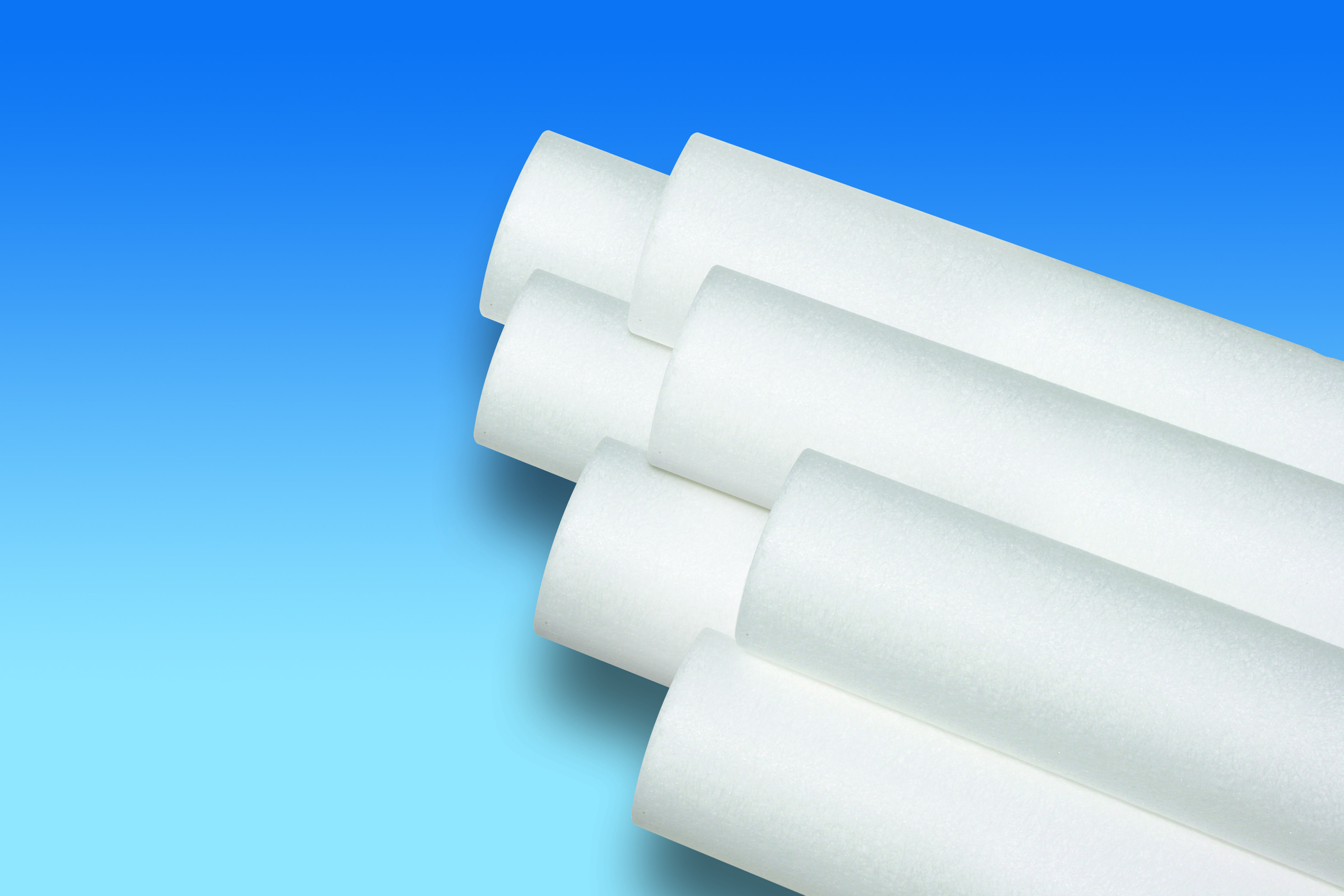
PP Melt blown filter cartridge
Melt blown filter cartridges require replacements annually, so you have to check that it is complete.
In most cases you will find filtrates of sediments, dirt and rust from the cartridge.
We are going to look at how to replace a melt blown filter cartridge that you use in your house to clean water.
The first step is to turn off the water supply system so that you can work comfortably without spilling water.
You will then release the pressure from the system to avoid any splashes on the ground when you remove the cover.
After that, put on hand gloves and remove the cover of the melt blown filter cartridge carefully.
Apply a little bit of force as some caps are in tightly.
After a successful unlocking, place the lid carefully on the ground making sure nothing causes damage.
You will see the melt blown filter cartridge then carefully remove it so that it doesn’t break.
It will have a lot of dirt, sediments and rust, so you have to be careful.
Place the dirty melt blown filter cartridge away and clean the surface where it was before.
After cleaning the surface, bring in the new melt blown filter cartridge and fix it at the right place.
Make sure that it fits in well, and it cannot be affected by the pressure of the water inside the pipes.
Replace the cover after cleaning it well and make sure it fits in tightly.
You can now allow the pressure to pump the water through the system.
Main Applications of Melt Blown Filters
When using the filter, you should evaluate the compatibility of the cartridge with the chemicals in use.
It means that you have to check if the compound you intend to filter is compatible with the filter.
You can use the melt blown filters in a variety of applications among them being:
- PCB Industry
- Electronics
- Treatment of wastewater
- Petrochemical Industry
- Foods and Beverages especially in the making of flavors, juices and sensitive consumables. It will also include wine pre-filtration, beer filtration using the trap filter, final wine cellar filtration and soft drinks among others.
- Reverse Osmosis water pre-filtration, DI water and makeup water.
- Cosmetics such as mouthwash, soaps, lotions and mineral oils
- Plating chemicals and solutions, machine coolants, stripping solutions, hydraulic press oil and washing aqueous parts.
- Solvents and Chemical Industry especially in bulk chemical filters, alcohols, acids, bleach, alkalis, acrylates, sodium hypochlorite and titanium dioxide.
- Municipal water, bottled water and potable water
- Weak bases and caustics
- Paints, pigments, inks and other forms of solvents that are non-halogenated
- Amines produced water, glycols and brine fluids
Conclusion
Well, you have all the information about the melt blown filter cartridge, and you know how it works.
You are in a better position to use one of the many varieties of melt blown filter cartridges available.
Why don’t you pick up your phone and order for your custom-made melt blown filter cartridge as soon as possible?
At FilSon Filters, we manufacture and sell a range of melt blown filter cartridges.
Contact our technical support today for competitive prices on melt blown filter cartridge.
Technical Data of Filson Melt Blown Filter Cartridge
- Filter Fineness: 0.5 – 120 µm
- Length: 5”– 70”
- Connections: DOE and O-ring adapter
- Outer Diameter: 60/62/64 mm
- Inner Diameter: 27/28/29 mm
- Fiber Material: Polypropylene/Polyester/Nylon
- End Caps: Polypropylene/Nylon
- Temperature Resistance: 80°C
- Differential Pressure: 4.0 bar/25°C
Features of Filson Melt Blown Filter Cartridge
- Made of 100% pure polypropylene(PP)
- No added adhesives with thermally welded end cap
- Graded density pore size for excellent filtration efficiency
- Designed to fit a variety of standard cartridge filter housings
- High dirt load capacity, long on-stream life
- Polypropylene(PP) core to prevent collapse and bypass
- FDA compliant for food and beverage applications
- Controlled pore size for high structural stability
- Excellent chemical and high-temperature compatibility
Applications of Filson Melt Blown Filter Cartridge
- Potable Water Filtration
- Food and Beverages
- DI Water Filtration
- Plating Solution Filtration
- R.O. Pre-filtration
- Membrane Pre-filtration
- Organic Solvent Filtration
- Chemical Processing
- Photographic Filtration
- Paper coatings
